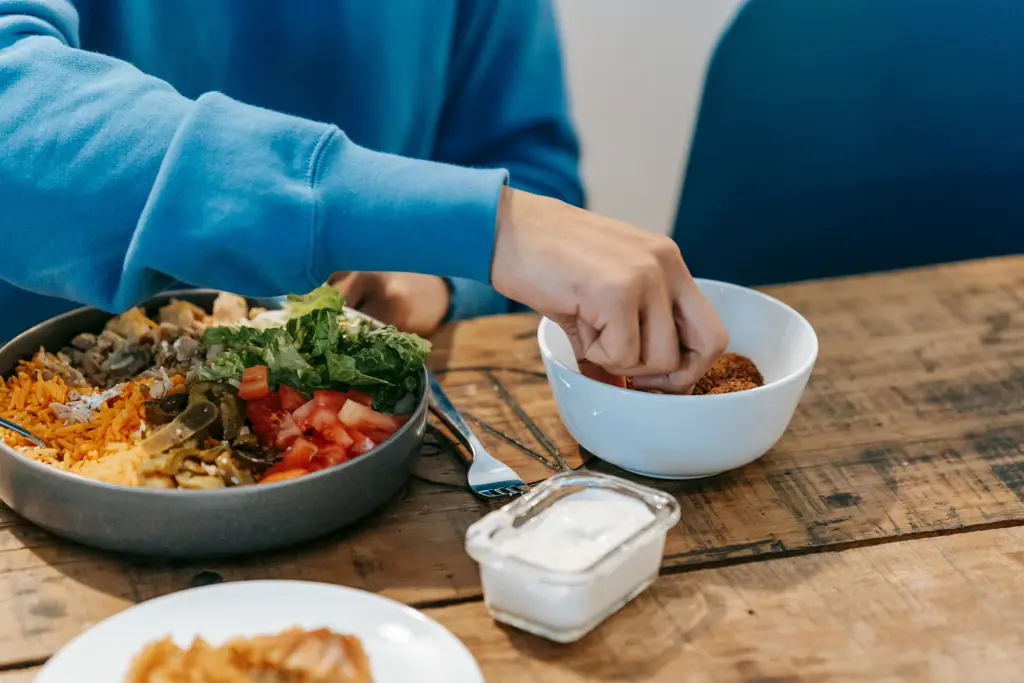Prepare yourself for a culinary journey to the heart of the Middle East, where we’ll unlock the secrets to crafting the best beef shawarma. This iconic dish, a cornerstone of Levantine cuisine, boasts a rich history and cultural significance that extends far beyond its delicious taste. Its origins are debated, with some tracing it back to the Ottoman Empire, where marinated meats were cooked on vertical rotisseries, a technique likely influenced by earlier methods of cooking meats over open fires. Others point to the influence of the ancient Greek gyro, suggesting a shared ancestry through similar cooking methods and the use of thinly sliced meat. Regardless of its precise lineage, shawarma’s popularity exploded in the 20th century, spreading across the globe and becoming a beloved street food and restaurant staple.
Shawarma’s cultural significance is deeply rooted in its role as a social food. It’s commonly found at gatherings, celebrations, and as a quick and satisfying meal for everyday life. The preparation itself is often a communal affair, with families and communities sharing in the process. Globally, the shawarma industry is booming. While precise figures are difficult to obtain, estimates suggest the global shawarma market is worth billions of dollars annually, showcasing its immense popularity across continents. This reflects not only the dish’s inherent deliciousness but also its adaptability; variations exist across the Middle East and beyond, incorporating different meats (lamb, chicken, turkey), spices, and sauces to suit local tastes. Each region boasts its own unique twist, making it a truly diverse and fascinating culinary experience.
Beyond the economic impact, shawarma holds a special place in the hearts and stomachs of millions. It’s more than just a meal; it’s a representation of cultural heritage and a testament to the enduring power of simple yet flavorful food. The tender, juicy meat, the aromatic spices, and the crisp pita bread all contribute to an unforgettable sensory experience. In this guide, we’ll explore the essential techniques and ingredients required to create a shawarma that rivals even the most celebrated street vendors, ensuring that you can experience the magic of this beloved dish in the comfort of your own kitchen. We’ll delve into the nuances of meat selection, marinade preparation, and the art of perfectly grilling the shawarma to achieve that signature crispy exterior and succulent interior.
Ingredients and Measurements
Creating the perfect Beef Shawarma hinges on the quality and precise measurement of your ingredients. Don’t skimp on quality – using good cuts of beef will significantly impact the final flavor and tenderness.
For the beef, you’ll need approximately 2 lbs (900g) of thinly sliced beef sirloin tip or flank steak. These cuts are lean yet flavorful, and their texture holds up well during the long marinating and cooking process. Avoid using overly fatty cuts, as they can render excessive grease and impact the overall taste. Ensure your butcher slices the meat thinly (about ⅛ inch or 3mm thick) for optimal cooking and tenderness. If slicing it yourself, use a very sharp knife and work quickly to maintain consistent thickness.
The marinade is equally crucial. You’ll need: 1 cup (240ml) plain yogurt (full-fat is recommended for richness); ¼ cup (60ml) lemon juice (freshly squeezed is best); 2 tablespoons olive oil; 2 tablespoons ground cumin; 1 tablespoon ground coriander; 1 tablespoon paprika (sweet or smoked, depending on your preference); 1 tablespoon garlic powder; 1 tablespoon onion powder; 1 teaspoon ground cinnamon; 1 teaspoon cayenne pepper (or less, to taste); 1 teaspoon salt; and ½ teaspoon black pepper. Adjust the cayenne pepper according to your spice tolerance. For a milder shawarma, reduce or omit it entirely.
For added depth of flavor, consider including 1 medium onion, finely chopped, and 2 cloves garlic, minced, directly into the marinade. These will infuse the beef with aromatic notes. Ensure the beef is fully submerged in the marinade for at least 4 hours, or preferably overnight in the refrigerator for optimal flavor penetration.
Finally, you’ll need some pita bread for serving. The number of pitas will depend on how many servings you’re making. Consider having 8-10 large pitas on hand for a generous portion per person. Don’t forget the accompaniments! These typically include tahini sauce, hummus, chopped tomatoes, shredded lettuce, and pickled turnips or onions. The quantities of these depend on personal preferences and the number of servings.
Meat Preparation (Marination and Tenderizing)
The key to exceptional beef shawarma lies in the meticulous preparation of the meat. This involves both tenderizing the beef to ensure a melt-in-your-mouth texture and marinating it to infuse it with vibrant flavors. We’ll be using approximately 2 lbs (900g) of beef top sirloin, known for its leanness and ability to hold its shape during cooking.
Tenderizing: Before marinating, it’s crucial to tenderize the beef. This breaks down tough muscle fibers, resulting in a more tender final product. You can achieve this using a few methods. A meat mallet is a classic choice; pound the sirloin evenly to a thickness of about 1/4 inch (0.6 cm). Alternatively, you can use a marinade containing acids like lemon juice or vinegar, which naturally tenderize the meat over time. Avoid over-tenderizing, as this can result in mushy meat.
Marinating: A well-balanced marinade is essential for flavor. For our 2 lbs of beef, we’ll use the following: 1/2 cup (120ml) olive oil, 1/4 cup (60ml) lemon juice, 2 tablespoons (30ml) red wine vinegar, 2 cloves garlic (minced), 1 teaspoon ground cumin, 1 teaspoon ground coriander, 1/2 teaspoon paprika, 1/2 teaspoon turmeric, 1/4 teaspoon cayenne pepper (optional, for heat), 1 teaspoon salt, and 1/2 teaspoon black pepper. Adjust the spices to your preference.
Combine all marinade ingredients in a large bowl. Add the tenderized beef, ensuring it’s fully coated. Seal the bowl with plastic wrap and refrigerate for at least 4 hours, or preferably overnight. A longer marination time (up to 24 hours) will result in deeper flavor penetration.
Professional Recommendation: For an even more tender result, consider using a combination of tenderizing methods. Lightly pound the meat with a mallet, then marinate it for an extended period. This dual approach guarantees maximum tenderness and flavor development.
Important Note: Ensure the beef is completely submerged in the marinade. If necessary, use a smaller bowl or add more marinade to ensure proper coverage. This prevents uneven flavor distribution and ensures the meat cooks consistently.
After marinating, remove the beef from the marinade and let it sit at room temperature for about 30 minutes before cooking. This allows the meat to come to a more even temperature, resulting in more consistent cooking. Do not discard the marinade! You can use it to baste the meat while it’s cooking on the shawarma rotisserie for added flavor and moisture.
Vegetable Preparation
The success of your beef shawarma relies heavily on the vibrant and flavorful vegetables that accompany the tender meat. Proper preparation is key to achieving the perfect texture and taste. We’ll be focusing on a classic combination, but feel free to adapt to your preferences.
Onions: Start with two large red onions and one large white onion. Finely slice the red onions into thin half-moons, aiming for about 1/8 inch thickness. This ensures they’re tender when cooked but still retain their shape. For the white onion, dice it into roughly 1/4-inch pieces. The red onion provides color and a milder flavor, while the white onion adds a sharper bite to balance the richness of the beef.
Tomatoes: Use about 3 large, ripe tomatoes. Dice them into roughly 1/2-inch cubes. Avoid using overly juicy tomatoes as they can release excess water and make the shawarma soggy. If your tomatoes are particularly watery, consider gently squeezing out some of the juice before adding them to the shawarma.
Cucumbers: Two medium-sized cucumbers are ideal. Peel them and then thinly slice them into half-moons, similar to the red onions. Ensure the slices are consistent in thickness for even cooking. English cucumbers are preferred for their less watery texture.
Bell Peppers: A mix of colors adds visual appeal. Use one green bell pepper and one red bell pepper. Remove the seeds and membranes, then thinly slice them into strips about 1/4 inch wide and 2-3 inches long. Avoid over-slicing the peppers as they can become mushy during cooking.
Pickled Turnips (optional): For an extra layer of flavor and texture, consider adding about 1 cup of finely diced pickled turnips. This adds a tangy, slightly spicy element that complements the beef beautifully. If using homemade pickled turnips, ensure they are drained well to avoid excess liquid.
Preparation Tip: Once all your vegetables are prepared, it’s a good idea to place them in separate bowls. This allows for more precise portion control when assembling your shawarma and prevents the vegetables from becoming overly saturated with each other’s juices.
Important Note: Before adding the vegetables to the shawarma, consider lightly sauteing or grilling them. This will enhance their flavors and slightly soften them, creating a better textural contrast with the beef. A quick sauté in a little olive oil for 2-3 minutes is sufficient.
Shawarma Assembly (Skewering or Stacking)
The assembly of your marinated beef for shawarma is crucial for even cooking and optimal flavor distribution. You have two primary methods: skewering and stacking. Both have their advantages and disadvantages, and the best choice often depends on the size of your shawarma machine and personal preference.
Skewering: This traditional method is best for smaller shawarma machines or if you prefer a more visually appealing, evenly cooked shawarma. Using long, sturdy metal skewers (at least 12 inches long), thread the marinated beef slices onto the skewers, ensuring they are tightly packed to prevent gaps. Aim for approximately 1-1.5 lbs of beef per skewer. Don’t overload the skewers, as this can lead to uneven cooking and difficulty rotating. Leave a small space between each slice to allow for better heat penetration. For a 5 lb batch of beef, you would need approximately 3-4 skewers.
Stacking: This method is ideal for larger shawarma machines and offers a simpler, quicker assembly process. It involves layering the marinated beef slices directly onto the shawarma machine’s vertical spit. Start by placing a layer of beef on the spit, ensuring even distribution. Continue layering the slices, pressing gently to compact them. Again, aim for a consistent thickness to ensure even cooking. A good starting point is to use approximately 5 lbs of beef for a medium-sized shawarma machine. You can adjust this quantity based on the size of your machine and desired cooking time.
Regardless of your chosen method, maintain even thickness throughout. Irregularly sized pieces will cook unevenly, resulting in some parts being overcooked while others remain undercooked. Consistency is key for a perfectly cooked shawarma. Before placing the beef on the skewer or spit, ensure it’s completely dry. Excess moisture can lead to steam and uneven cooking. Pat the beef dry with paper towels to remove any excess marinade.
Professional Recommendation: For optimal results, slightly overlap the beef slices when layering or skewering. This helps create a cohesive unit that cooks more evenly and prevents gaps that could lead to burning or uneven browning. Experiment with both methods to find what works best for your equipment and preference. Remember that proper assembly is just one component of making the best beef shawarma; the quality of your marinade and cooking technique are equally important.
Cooking Techniques (Grilling, Roasting, or Pan-frying)
Achieving the perfect beef shawarma relies heavily on the chosen cooking technique. While traditionally cooked on a vertical rotisserie, home cooks can successfully replicate the delicious results using grilling, roasting, or pan-frying. Each method offers unique advantages and requires slightly different approaches.
Grilling: This method delivers that characteristic smoky char and crispy exterior that many associate with shawarma. For best results, use a high-heat grill, preheated to around 400-450°F (200-230°C). Cut the marinated beef into 1/2-inch thick slices. Grill in batches, ensuring not to overcrowd the grates, for approximately 2-3 minutes per side, or until nicely browned and cooked through to an internal temperature of 160°F (71°C) for medium. Avoid pressing down on the meat while grilling; this will release juices and result in dry shawarma. Regularly basting with the remaining marinade during grilling enhances flavor and moisture.
Roasting: Roasting in the oven provides a more even cooking process, ideal for larger quantities of beef. Preheat your oven to 375°F (190°C). Place the marinated beef slices in a single layer on a large baking sheet lined with parchment paper. Roast for 20-25 minutes, flipping halfway through, until the internal temperature reaches 160°F (71°C). Ensure that the beef is not piled too high on the baking sheet to allow for even heat distribution. For added crispness, you can broil the beef for the last 2-3 minutes of cooking.
Pan-frying: Pan-frying is a quick and convenient method, perfect for smaller portions. Heat a large skillet or preferably a cast iron pan over medium-high heat. Add 1-2 tablespoons of oil with a high smoke point, such as canola or vegetable oil. Add the marinated beef slices and cook for 3-4 minutes per side, or until browned and cooked to an internal temperature of 160°F (71°C). Use tongs to carefully flip the beef slices, avoiding breaking them. For extra flavor, add a knob of butter to the pan during the last minute of cooking.
Regardless of the method chosen, always use a meat thermometer to ensure the beef reaches a safe internal temperature of 160°F (71°C) to prevent foodborne illnesses. Remember that the cooking time may vary depending on the thickness of the beef slices and the heat source. Adjust accordingly to achieve your desired level of doneness.
Sauce Preparation
The sauce is just as crucial as the marinated beef for a truly exceptional beef shawarma. A well-balanced sauce elevates the entire dish, cutting through the richness of the meat and adding a delightful complexity of flavor. We’ll be making a classic tahini-based sauce, but feel free to experiment with variations once you master this recipe.
Ingredients:
- 1 cup tahini (high-quality tahini makes a significant difference)
- 1/2 cup lemon juice (freshly squeezed is best)
- 1/4 cup water (add more if needed for desired consistency)
- 2 cloves garlic, minced
- 1 tablespoon olive oil
- 1 teaspoon ground cumin
- 1/2 teaspoon salt (or to taste)
- 1/4 teaspoon black pepper
- Optional: 1-2 tablespoons chopped fresh parsley for garnish
Instructions:
Begin by combining the tahini and lemon juice in a medium-sized bowl. Whisk vigorously for at least 1-2 minutes. This is crucial to emulsify the sauce and prevent it from being gritty. The tahini will initially be quite thick, but as you whisk, it will gradually become smoother and creamier.
Slowly add the water, a tablespoon at a time, while continuing to whisk. Adjust the amount of water to achieve your desired consistency. Some prefer a thicker sauce, while others like it a bit runnier. Taste and adjust accordingly.
Next, add the minced garlic, olive oil, cumin, salt, and pepper. Whisk everything together until thoroughly combined and the sauce is smooth and homogenous. Taste the sauce and adjust the seasoning if needed. You might want to add more lemon juice for acidity, salt for saltiness, or cumin for warmth.
Professional Tip: Let the sauce rest for at least 15-30 minutes in the refrigerator. This allows the flavors to meld and deepen, resulting in a more complex and delicious sauce. Garnish with chopped fresh parsley before serving for an extra touch of freshness and visual appeal.
Storage: Store leftover sauce in an airtight container in the refrigerator for up to 5 days. The sauce may thicken slightly upon refrigeration; simply whisk it again before serving to restore its creamy texture.
Recommendations for the Best Beef Shawarma
For the most succulent and flavorful beef shawarma, marinate the beef for at least 4 hours, preferably overnight. This allows the spices to penetrate the meat thoroughly, resulting in a more intense and delicious flavor. Don’t be afraid to experiment with different spice blends to find your perfect combination. Consider adding a touch of sweetness with a little brown sugar or honey for a balanced profile.
Proper cooking is crucial. Slow-roasting or grilling the marinated beef ensures it remains tender and juicy. Avoid overcooking, as this will result in dry, tough meat. Use a meat thermometer to ensure the internal temperature reaches a safe 160°F (71°C). For a crispier exterior, consider broiling the shawarma for the last few minutes of cooking.
Serving suggestions are key to elevating your shawarma experience. Serve the thinly sliced beef in warm pita bread with a generous helping of your favorite toppings. Consider hummus, tahini, toum (garlic sauce), pickles, and a fresh salad of tomatoes, cucumbers, and onions. Don’t forget a squeeze of fresh lemon juice for an extra zing!
Storage is important to maintain freshness. Leftover shawarma should be stored in an airtight container in the refrigerator for up to 3 days. You can reheat it gently in a pan or microwave. Freezing is also an option; wrap the shawarma tightly in plastic wrap and then in foil before placing it in a freezer bag. It can be stored frozen for up to 3 months.
Complementary dishes enhance the overall meal. A simple side salad with a light vinaigrette, a bowl of creamy hummus, or even some crispy fries can perfectly complement the rich flavors of the shawarma. Consider serving it with a side of fluffy rice or a flavorful tabbouleh salad for a more complete and satisfying meal.
Nutritional Information (per serving, approximate): This will vary depending on the specific ingredients and portion sizes. However, a typical serving of beef shawarma might contain approximately 350-450 calories, with varying amounts of protein, fat, and carbohydrates. The exact breakdown will depend on the type and amount of meat, the type of bread used, and the quantity of toppings included. For accurate nutritional information, use a nutrition calculator and input your specific recipe ingredients and portion sizes.
Important Note: Always ensure your beef is cooked to a safe internal temperature to prevent foodborne illnesses.





